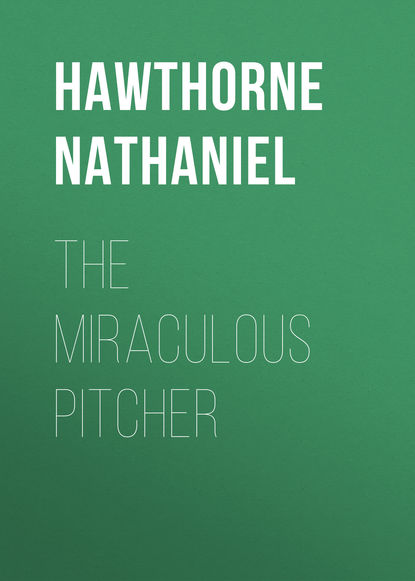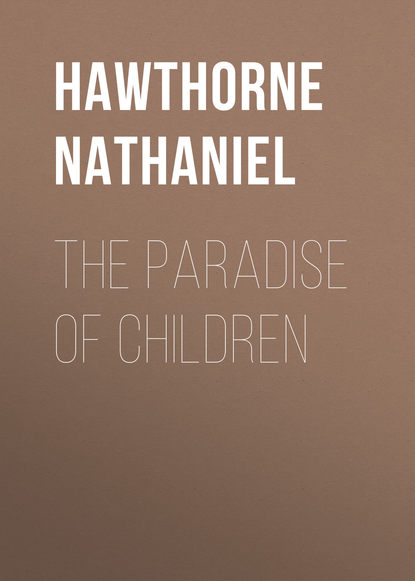 Полная версия
Полная версияПолная версия:
Натаниель Готорн Old Ticonderoga, a Picture of the Past
- + Увеличить шрифт
- - Уменьшить шрифт

Nathaniel Hawthorne
Old Ticonderoga, a Picture of the Past / (From: «The Snow Image and Other Twice-Told Tales»)
OLD TICONDEROGA
A PICTURE OF THE PAST
The greatest attraction, in this vicinity, is the famous old fortress of Ticonderoga, the remains of which are visible from the piazza of the tavern, on a swell of land that shuts in the prospect of the lake. Those celebrated heights, Mount Defiance and Mount Independence, familiar to all Americans in history, stand too prominent not to be recognized, though neither of them precisely corresponds to the images excited by their names. In truth, the whole scene, except the interior of the fortress, disappointed me. Mount Defiance, which one pictures as a steep, lofty, and rugged hill, of most formidable aspect, frowning down with the grim visage of a precipice on old Ticonderoga, is merely a long and wooded ridge; and bore, at some former period, the gentle name of Sugar Hill. The brow is certainly difficult to climb, and high enough to look into every corner of the fortress. St. Clair's most probable reason, however, for neglecting to occupy it, was the deficiency of troops to man the works already constructed, rather than the supposed inaccessibility of Mount Defiance. It is singular that the French never fortified this height, standing, as it does, in the quarter whence they must have looked for the advance of a British army.
In my first view of the ruins, I was favored with the scientific guidance of a young lieutenant of engineers, recently from West Point, where he had gained credit for great military genius. I saw nothing but confusion in what chiefly interested him; straight lines and zigzags, defence within defence, wall opposed to wall, and ditch intersecting ditch; oblong squares of masonry below the surface of the earth, and huge mounds, or turf-covered hills of stone, above it. On one of these artificial hillocks, a pine-tree has rooted itself, and grown tall and strong, since the banner-staff was levelled. But where my unmilitary glance could trace no regularity, the young lieutenant was perfectly at home. He fathomed the meaning of every ditch, and formed an entire plan of the fortress from its half-obliterated lines. His description of Ticonderoga would be as accurate as a geometrical theorem, and as barren of the poetry that has clustered round its decay. I viewed Ticonderoga as a place of ancient strength, in ruins for half a century: where the flags of three nations had successively waved, and none waved now; where armies had struggled, so long ago that the bones of the slain were mouldered; where Peace had found a heritage in the forsaken haunts of War. Now the young West-Pointer, with his lectures on ravelins, counterscarps, angles, and covered ways, made it an affair of brick and mortar and hewn stone, arranged on certain regular principles, having a good deal to do with mathematics, but nothing at all with poetry.
I should have been glad of a hoary veteran to totter by my side, and tell me, perhaps, of the French garrisons and their Indian allies, – of Abercrombie, Lord Howe, and Amherst, – of Ethan Allen's triumph and St. Clair's surrender. The old soldier and the old fortress would be emblems of each other. His reminiscences, though vivid as the image of Ticonderoga in the lake, would harmonize with the gray influence of the scene. A survivor of the long-disbanded garrisons, though but a private soldier, might have mustered his dead chiefs and comrades, – some from Westminster Abbey, and English churchyards, and battle-fields in Europe, – others from their graves here in America, – others, not a few, who lie sleeping round the fortress; he might have mustered them all, and bid them march through the ruined gateway, turning their old historic faces on me, as they passed. Next to such a companion, the best is one's own fancy.
At another visit I was alone, and, after rambling all over the ramparts, sat down to rest myself in one of the roofless barracks. These are old French structures, and appear to have occupied three sides of a large area, now overgrown with grass, nettles, and thistles. The one in which I sat was long and narrow, as all the rest had been, with peaked gables. The exterior walls were nearly entire, constructed of gray, flat, unpicked stones, the aged strength of which promised long to resist the elements, if no other violence should precipitate their fall. – The roof, floors, partitions, and the rest of the wood-work had probably been burnt, except some bars of stanch old oak, which were blackened with fire, but still remained imbedded into the window-sills and over the doors. There were a few particles of plastering near the chimney, scratched with rude figures, perhaps by a soldier's hand. A most luxuriant crop of weeds had sprung up within the edifice, and hid the scattered fragments of the wall. Grass and weeds grew in the windows, and in all the crevices of the stone, climbing, step by step, till a tuft of yellow flowers was waving on the highest peak of the gable. Some spicy herb diffused a pleasant odor through the ruin. A verdant heap of vegetation had covered the hearth of the second floor, clustering on the very spot where the huge logs had mouldered to glowing coals, and flourished beneath the broad flue, which had so often puffed the smoke over a circle of French or English soldiers. I felt that there was no other token of decay so impressive as that bed of weeds in the place of the backlog.
Here I sat, with those roofless walls about me, the clear sky over my head, and the afternoon sunshine falling gently bright through the window-frames and doorway. I heard the tinkling of a cow-bell, the twittering of birds, and the pleasant hum of insects. Once a gay butterfly, with four gold-speckled wings, came and fluttered about my head, then flew up and lighted on the highest tuft of yellow flowers, and at last took wing across the lake. Next a bee buzzed through the sunshine, and found much sweetness among the weeds. After watching him till he went off to his distant hive, I closed my eyes on Ticonderoga in ruins, and cast a dream-like glance over pictures of the past, and scenes of which this spot had been the theatre.
At first, my fancy saw only the stern hills, lonely lakes, and venerable woods. Not a tree, since their seeds were first scattered over the infant soil, had felt the axe, but had grown up and flourished through its long generation, had fallen beneath the weight of years, been buried in green moss, and nourished the roots of others as gigantic. Hark! A light paddle dips into the lake, a birch canoe glides round the point, and an Indian chief has passed, painted and feather-crested, armed with a bow of hickory, a stone tomahawk, and flint-headed arrows. But the ripple had hardly vanished from the water, when a white flag caught the breeze, over a castle in the wilderness, with frowning ramparts and a hundred cannon. There stood a French chevalier, commandant of the fortress, paying court to a copper-colored lady, the princess of the land, and winning her wild love by the arts which had been successful with Parisian dames. A war-party of French and Indians were issuing from the gate to lay waste some village of New England. Near the fortress there was a group of dancers. The merry soldiers footing it with the swart savage maids; deeper in the wood, some red men were growing frantic around a keg of the fire-water; and elsewhere a Jesuit preached the faith of high cathedrals beneath a canopy of forest boughs, and distributed crucifixes to be worn beside English scalps.
I tried to make a series of pictures from the old French war, when fleets were on the lake and armies in the woods, and especially of Abercrombie's disastrous repulse, where thousands of lives were utterly thrown away; but, being at a loss how to order the battle, I chose an evening scene in the barracks, after the fortress had surrendered to Sir Jeffrey Amherst. What an immense fire blazes on that hearth, gleaming on swords, bayonets, and musket-barrels, and blending with the hue of the scarlet coats till the whole barrack-room is quivering with ruddy light! One soldier has thrown himself down to rest, after a deer-hunt, or perhaps a long run through the woods with Indians on his trail. Two stand up to wrestle, and are on the point of coming to blows. A fifer plays a shrill accompaniment to a drummer's song, – a strain of light love and bloody war, with a chorus thundered forth by twenty voices. Meantime, a veteran in the corner is prosing about Dettingen and Fontenoy, and relates camp-traditions of Marlborough's battles, till his pipe, having been roguishly charged with gunpowder, makes a terrible explosion under his nose. And now they all vanish in a puff of smoke from the chimney.
I merely glanced at the ensuing twenty years, which glided peacefully over the frontier fortress, till Ethan Allen's shout was heard, summoning it to surrender "in the name of the great Jehovah and of the Continental Congress." Strange allies! thought the British captain. Next came the hurried muster of the soldiers of liberty, when the cannon of Burgoyne, pointing down upon their stronghold from the brow of Mount Defiance, announced a new conqueror of Ticonderoga. No virgin fortress, this! Forth rushed the motley throng from the barracks, one man wearing the blue and buff of the Union, another the red coat of Britain, a third a dragoon's jacket, and a fourth a cotton frock; here was a pair of leather breeches, and striped trousers there; a grenadier's cap on one head, and a broad-brimmed hat, with a tall feather, on the next; this fellow shouldering a king's arm, that might throw a bullet to Crown Point, and his comrade a long fowling-piece, admirable to shoot ducks on the lake. In the midst of the bustle, when the fortress was all alive with its last warlike scene, the ringing of a bell on the lake made me suddenly unclose my eyes, and behold only the gray and weed-grown ruins. They were as peaceful in the sun as a warrior's grave.
Hastening to the rampart, I perceived that the signal had been given by the steamboat Franklin, which landed a passenger from Whitehall at the tavern, and resumed its progress northward, to reach Canada the next morning. A sloop was pursuing the same track; a little skiff had just crossed the ferry; while a scow, laden with lumber, spread its huge square sail, and went up the lake. The whole country was a cultivated farm. Within musket-shot of the ramparts lay the neat villa of Mr. Pell, who, since the Revolution, has become proprietor of a spot for which France, England, and America have so often struggled. How forcibly the lapse of time and change of circumstances came home to my apprehension! Banner would never wave again, nor cannon roar, nor blood be shed, nor trumpet stir up a soldier's heart, in this old fort of Ticonderoga. Tall trees have grown upon its ramparts, since the last garrison marched out, to return no more, or only at some dreamer's summons, gliding from the twilight past to vanish among realities.







